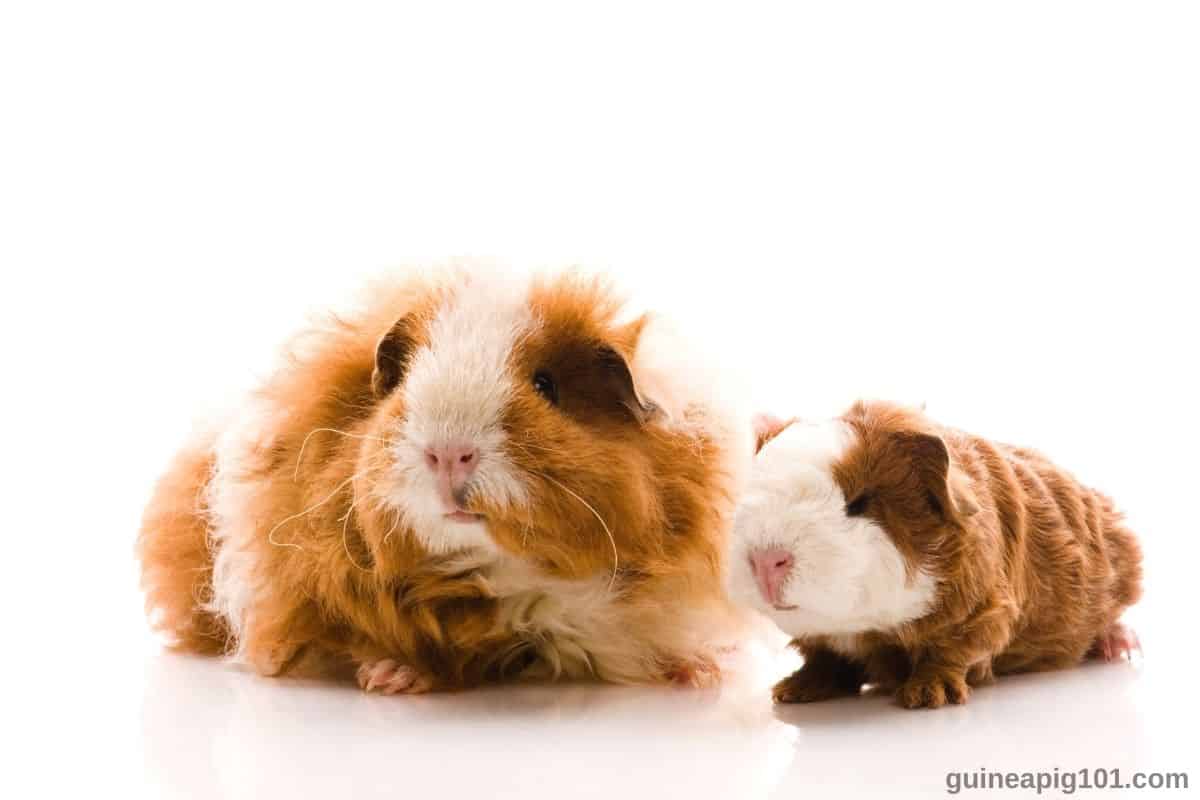The Texel guinea pigs are the long hair guinea pig breed, which has been very popular in recent years. They have slightly longer hair than the Silkie/sheltie breed, but the hairs are curly, unlike the Silkie breed. The coat is somewhat rough, like the Rex guinea pigs.
Discovered by the crossbreed of various guinea pigs, the Texel guinea pigs have a unique, long, and curly hair coat. Their long and curly hairs look fantastic but possess a challenge for the owners while grooming them, so they are not the best-recommended breed for beginners.
Texel guinea pig has a Unique appearance and Character, which can make any guinea pig owner fall in love with them. But they do come with some challenges for the keepers.
If you are looking to know all about the Texel guinea pig right from their Origin, Appearance to Care & Diseases, then bear with us till the end, and we shall ensure you that you know everything about them before we end this article for you.
Texel guinea pig origin
The Texel guinea pigs originated in the early 1980s in England. The first of the kind was introduced by crossbreeding Long haired Silkie guinea pig with a Curly coated Rex guinea pig.
It has gone through lots of crossbreeding and mutations since then; thus, what we see today is a unique breed that has a unique appearance and characteristics.
Within the next few years of originating, the race became very popular in the entire US and the rest of the world.
The rising popularity soon made them so famous in homes and show competitions that American Cavy Breeders Association had to include them in the new breeds list officially. They were formally included in the list in the late 1990s.
Since then, there have been several more crossbreeds, and we can see a wide range of color, texture, and hair coat among the Texel guinea pigs.
If you want to learn more about how guinea pigs originated, where they come from, and how they became such a popular pet, then read our complete guide: Guinea Pig: Scientific Name, History, Weight, Breed, And Much More!
Physical Appearance Of Texel Guinea Pig
Texel guinea pigs are one of the unique breeds you will find among all others. The uniqueness comes from the long curly hair they possess, from a mix of curly hair Rex with a long hair Sheltie.
They are also known as “Long-haired Sheltie” as many people find the hair’s length to be like a Sheltie guinea pig.
Their unique Thick, Curly & Long coat poses a challenge for the keepers as they are quite challenging to groom among all other breeds. Although the coat also makes them the show stopper in many show competitions.
Most of the Texel varieties have shorter facial hair and nearly no hair around their ears and under their jawlines. (Although this may vary depending upon the type you get.)
Texel Guinea Pig Size
Texel guinea pigs also have a distinct body size. They have a shorter body as compared to most of the other breeds. But how long are they?
In most cases, your Texel guinea pig will grow up to 8-10 inches(20-25cm) at maturity. Let us have a look at their growth rate:
| Age | At Birth | 8 weeks | 16 weeks | Maturity |
|---|---|---|---|---|
| Growth Rate | 2-3 inches (5-8cm) | 5-6 inches (12-15cm) | 7-8 inches (18-20cm) | 8-10 inches (20-25cm) |
As you can see, the Texel guinea pigs are around 2-3 inches at the time of birth.
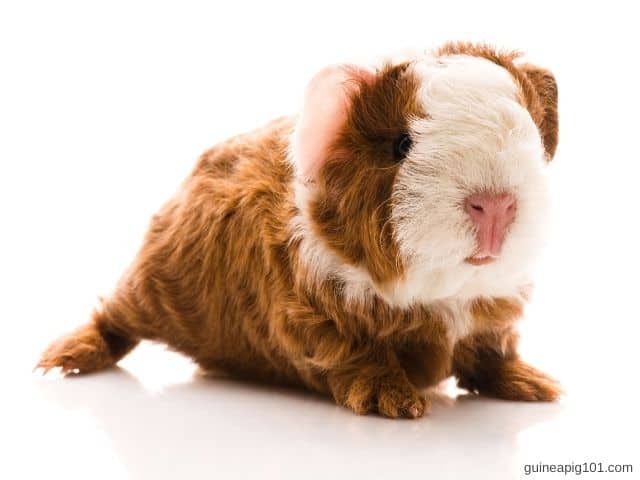
Although the size may vary depending upon the Litter size, however, just like other guinea pig breeds, they grow at a much larger pace and reach 5-6 inches in almost eight weeks.
After this point, the growth rate slackens slightly, and they reach a size of 7-8 inches by 16 weeks.
Moving further, they can grow up to 14 months of age, but at a prolonged speed, and by the time they hit the maturity mark, they tend to reach 8-10 inches in size.
However, the size can vary depending upon the mix you get and the gender you own.
It is typically seen that the male guinea pigs are slightly longer than a female guinea pig, although this may not hold in all cases.
Texel Guinea Pig Weight
| New Born | 8 Weeks | Maturity | |
|---|---|---|---|
| Male | 70-100 grams | 400-450 grams | 800-1200 grams |
| Female | 60-90 grams | 380-430 grams | 800-1000 grams |
A newborn Texel guinea pig can weigh anywhere between 60-100grams. The guinea pig’s weigh increases at a pretty high pace in the first eight weeks.
They can reach anywhere between 400-450 grams for a male Texel guinea pig and 380-430 grams for a female Texel guinea pig by the end of the first eight weeks.
After eight weeks, the growth rate somewhat slackens, yet they continue to grow till they hit their maturity mark.
At this point, they might weigh anywhere between 800-1200 grams for a male Texel guinea pig and 800-1000 grams for a female Texel guinea pig.
Again, as you can see, the weigh of a female guinea pig is a little less than that of male guinea pigs, although this might not be the case always.
The round face with shorter facial hair combined with long curly hair covering the entire body can easily make any guinea pig owner confused. Hence most of them end up overlooking their weight issue.
It gets tough to tell if your guinea pig is overweight, underweight, or a perfect fit. That’s why we recommend you weigh your guinea pig at a regular interval.
Guinea pig Size-O-Meter from the PMFA can also help you understand whether your guinea pig is underweight, overweight, or a perfect fit one.
Texel Guinea Pig Color
Texel guinea pigs are available in a variety of colors. There are “self-colored” texel guinea pigs, which have some solid colors like Black, Red, Beige, Brown, etc.
They are also available in patterns, and different color mixes like a white body with a blend of brown color or even white with a black pattern in the body, etc. These are also known as “non-self” guinea pigs.
You can get a wide variety of color and design if you look for texel guinea pigs around your area.
Texel guinea pig Temperament
Just like humans, all guinea pigs carry a different temperament. It can be quite challenging to say how your guinea pig will behave.
But in general, Texel guinea pigs carry the personality of a long-haired guinea pig breed.
Texel guinea pig carries a calm and sweet nature. Although they are active and cheeky, they still enjoy it if you hold them and play with them.
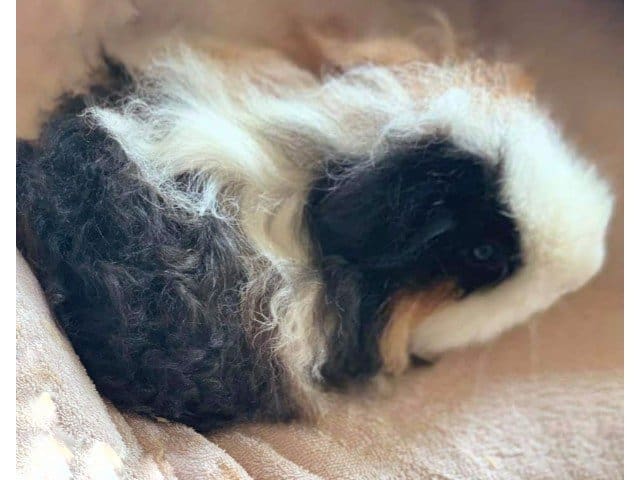
They love it when you groom them, and you will notice that unlike other breeds they will enjoy and be very patient while you are brushing them.
Guinea pig personality says a lot about their health and are early signs of illness.
If you see a sudden change in your guinea pig personality, it is recommended to visit a vet. They might be suffering from some diseases that you might still be unaware of.
Texel Guinea Pig Care
Texel guinea pigs carry a unique look and personality, which is loved by many guinea pig owners. However, if you are getting your first guinea pig, then texel guinea pig might not be the best choice for you.
The diet and habitat requirements of a texel guinea pig are the same as other breeds. However, they do need some special grooming, which can be challenging for new owners.
Although grooming a texel guinea pig can be quite rewarding, it just loves to be handled and groomed.
Let us begin by looking at some of the essential requirements first and then moving ahead with some special ones.
Diet Of Texel Guinea Pig
The dietary requirement for a Texel guinea pig is the same as other guinea pig breeds.
The staple portion of their diet remains hay, which covers 80% of their food.
The rest 15% is fulfilled by fresh vegetables and 5% by pellets.
You should also ensure they have access to fresh and clean water all the time while the treats are the optional part of their diet.
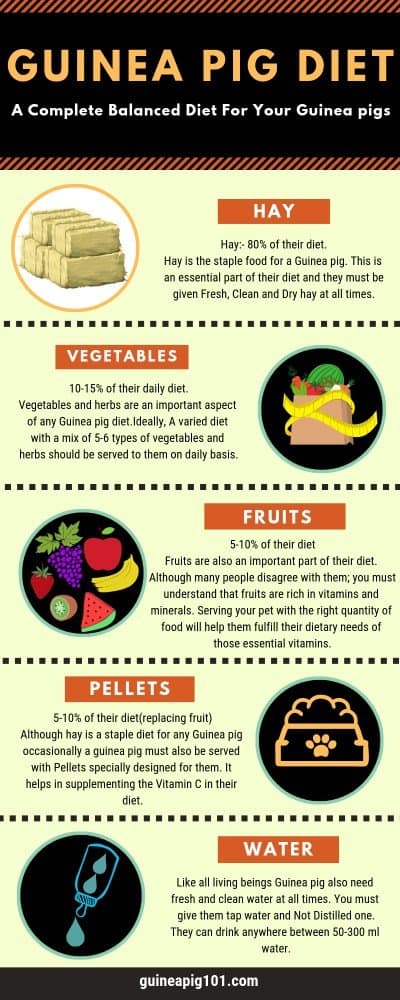
Hay
The staple diet for guinea pigs consists of 80% hay. While there are different hay types available in the market, the most preferred hay for your guinea pig shall be Timothy hay.
Timothy hay contains a decent amount of fiber and a minimal amount of calcium, which is best for your guinea pig.
Although alfalfa hay is also available in the market, do not serve your guinea pig with alfalfa-based hay.
They have high calcium content, leading to bladder stones and sludge in guinea pigs. Although we can serve some alfalfa hay to young guinea pigs, they need extra calcium in their early growth stage.
Fresh Vegetables
Fresh vegetables are a crucial part of a guinea pig’s diet. Guinea pigs need fresh vegetables to supply essential vitamins and minerals, which hay alone cannot provide.
You need to serve a mix of 5-6 different vegetables daily to achieve a balance in their diet. The quantity of serving should be no more than 1 cup per day. Try to make a mix that is low in Calcium and high in Vitamin C.
Vitamin C is the most crucial part of a guinea pig’s diet. Kale, Parsley, Cabbage, Spinach, Chicory, Dandelion green, Turnip Green, Romaine Lettuce, Green bell pepper, Brussels Sprouts, etc. are some Vegetables which is rich in vitamin C.
You can mix it with Lettuce, Cucumber, Zucchini, Carrot, Tomatoes, etc.

Please make sure any vegetables you serve are appropriately washed so that any toxic chemicals attached to them get removed. Also, make sure you prepare the food properly before serving it to your guinea pig.
Note: If you are introducing any new vegetables, you must do it very slowly. Guinea pigs have a sensitive digestive system, and any significant change in their diet can set it off-balance.
Pellets
Pellets are a great addition to your guinea pig’s diet, especially when you have a picky guinea pig. Some guinea pigs are fussy when it comes to vegetables.
If your guinea pig doesn’t enjoy enough vegetables or High vitamin C vegetables, then you should give pellets a try.
Pellets contain all the essential nutrients right from fiber to Vitamins and minerals needed by your guinea pigs.
You should serve 1/8 cup to 1/6 cup of pellets every day to your guinea pigs.
Please note: Pellets are no replacement for hay and fresh vegetables. Use them as a supplement for essential nutrients so that your guinea pig remains happy & healthy.
Also Read: How To Get My Guinea Pig To Eat Pellets?
Treats
Treats are also an essential part of a guinea pigs diet. You should serve your guinea pigs with a treat or two once a week or so.
The main goal is to bring some change of taste in their diet. There are various treats options available for your guinea pigs, right from fresh fruits like Grapes, Apples, Oranges, Strawberries, Kiwi, etc. to commercially prepared ones.
Try to experiment a little bit to find out what your guinea pigs love the most. Treats are also useful in training your guinea pigs.
You can Litter train your guinea pig or even teach them tricks by using the treats as the reward for training.
Please note: You should not serve treats frequently. Once or twice a week is usually recommended. Remember to serve only a small quantity as overfeeding of treats can lead to health issues like diabetes, obesity, etc.
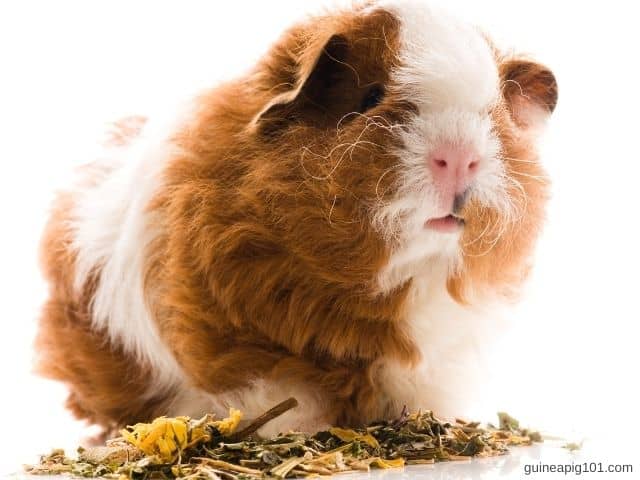
Water
Your Guinea pig must have a water bottle or a bowl filled with fresh and clean water at all times.
Guinea pigs are active throughout day and night, and they do eat and drink all the time. So, make sure you refill the bottle at least two times daily.
In average, a guinea pig can drink anywhere between 50ml to 300ml of water every day. The consumption will depend upon the weather, diet, and many more factors.
Also Read: Why Is My Guinea Pig Not Drinking Water? (Reasons+What To Do)
Texel Guinea Pig Habitat
The habitat requirement of a texel guinea pig is also similar to other guinea pig breeds. Let us have a look at the basics:
Cage
Texel guinea pigs need a large cage of at least 7.5 sq feet, placed in a well-ventilated area. We should set the cage in an area with a stable temperature ranging from 65 to 75 degrees F (18 to 24 degrees C).
Anything above or below that can cause some health issues in guinea pigs. Texel guinea pigs need a reasonably large cage with a dedicated food and water area and a playing area.
Due to their long curly hairs, the food particles can get stuck to the coat, making them dirty and making grooming quite tricky.
Having a larger cage gives them more space to play, and thus, both the cage and guinea pigs get less soiled. It also makes maintenance an easy task.
Bedding
Bedding is a crucial choice to make when it comes to texel guinea pigs. Having fleece as bedding can help quite a bit if you own a texel guinea pig.
Fleece bedding is quite easy to clean and maintain, also. If you use aspen or cheap paper bedding, it might get stuck on a texel guinea pig’s long curly hair.
So, having fleece bedding helps a lot and cuts a lot of time you would have otherwise needed for grooming your guinea pig.
Good quality fleece beddings are super absorbent and odor-free, which is always great for your guinea pig.
Food Dishes
Food bowls and hay racks are also crucial for a texel guinea pig. Having a good quality food bowl that doesn’t tip over helps keep the cage clean, which is essential if you own a texel guinea pig.
Hay racks are also a great addition as it helps in keeping the mess together in the area rather than spreading it across the cage. You should consider buying one if you own a texel guinea pig.
Water Bottle
Water bottles are an essential part of the cage. Guinea pigs need access to fresh and clean water at all times.
So, having a good quality water bottle in their cage is essential. Make sure the water bottle doesn’t leak and create havoc in your cage.
Hidings and Toys
Guinea pigs are active animals, and we should add some toys in their cage to keep them busy. Providing good quality chew toys, tunnels, hammocks, etc. keeps your guinea pig busy and active.
If your guinea pig is bored, then you will notice them chewing their cage bars. If they are doing so, it means they need some physical and mental stimulation, and adding some toys is a great way to do that.
Hiding spaces are also a must in any guinea pig habitat. Guinea pigs are prey animals, and they do need somewhere to burrow or mask so that they can feel safe and secured.
Having some functional hiding space also helps them take a good nap, which is good for their health. It makes them feel more at home.
How to groom Texel guinea pig
Grooming a texel guinea pig comes with a little bit of challenge. Texel guinea pigs have these long curly hair, which is somewhat tough to brush.
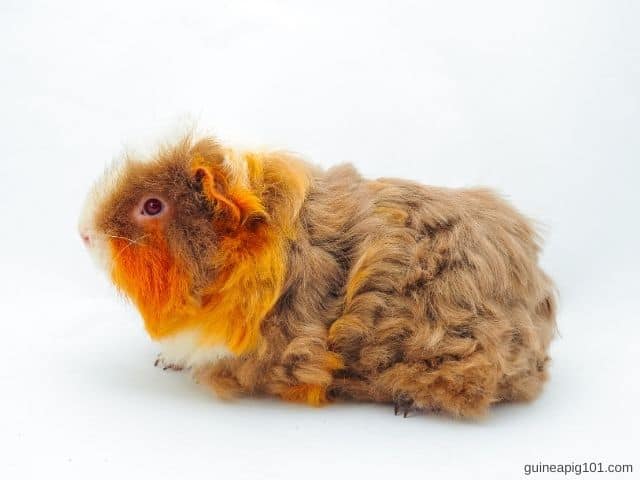
Although the hair is soft and shiny, it does accumulate some debris in it, including the hay and the poop, which makes it a challenge. Let us learn some essential grooming of your texel guinea pig:
Brushing
Texel guinea pigs need daily brushing to keep their long curly hair tangle-free.
Brushing also helps remove any debris stuck in their coat, thus keeping the skin and coat healthy.
The long-haired guinea pig breeds like this need more frequent grooming than any other races.
The grooming process may take even more time during spring and early summer when they shed some of their hair.
Always remember to brush your guinea pig using a soft bristle brush. Also, ensure you brush in the direction of the hair to avoid any injury to your guinea pig.
If you have bought a new texel guinea pig, then it might be a little shy when you start grooming them, but with some love and treats, you can make them sweet and loving.
Once your guinea pig gets accustomed to you, they will patiently give you time to groom them.
Hair clipping
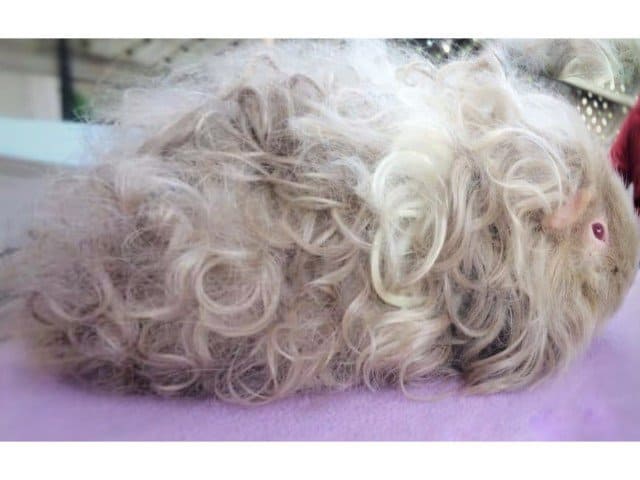
Hair clipping is also an important aspect to consider if you have a texel guinea pig. The British Cavy Council states that a texel guinea pig’s hair can grow at the rate of 1 inch every month (2.5 cm).
As you can see, the growth rate is pretty fast, so you should definitely consider clipping their hair every month. The hair around their legs and anus or grease gland needs frequent clipping.
If you notice the hairs are overgrown, consider cutting them to avoid debris buildup in the coat. You can spray some lukewarm water, hold your guinea pig firmly and clip the required hair using a sharp scissor.
Nail Clipping
Trimming your guinea pigs nail is something you cannot skip. Guinea pig’s nails grow pretty quickly and need a trim every month.
If you don’t get it trimmed on time, they may overgrow and curl around, hurting your guinea pig toe, causing pain and difficulty in walking.
You can use a nail trimmer and clip down the nails. If you end up trimming too deep and hurting your guinea pig by mistake and it starts bleeding, then you can apply some cornflour to stop the bleeding.
A quick tip: You can hold your guinea pig by wrapping them in a towel and put their paws above a flashlight. You will be able to see through the nails and veins in them. Just be careful and use a good pair of clippers to clip off the new growth, and you are good to go.
Grease Gland Cleaning
Grease glands are glands that secrete a greasy substance which guinea pigs use for scenting and marking purposes. If your guinea pig has an active grease gland, then it needs regular care.
If you don’t clean the grease gland of your texel guinea pig regularly, then the long hair around the area will be hard and sticky, which will look bad and produce some foul smell.
It is recommended to clean your guinea pig’s grease gland at least once in a few weeks. Cleaning your guinea pig grease gland is pretty simple, and you can learn about it in our article where we have shared all about it in detail:
Bathing
Bathing your texel guinea pig is also an essential part of grooming them. As long hair guinea pigs tend to get a lot dirty than the short-haired one, they do need a bath every month.
Their coat can carry many poop and debris from around the cage, which makes the skin and hair dirty pretty fast. So, cleaning out the dirt and debris with a quick and refreshing bath is crucial.
Bath your guinea pig in a small tub with some lukewarm water. Just fill the tub till the water reaches their stomach and then carefully put your guinea pig in it. Lather up using some good quality guinea pig shampoo and rinse it off thoroughly.
You can then use some towels and hairdryers to dry them off before they can get back to their cage. You can check out more tips on bathing your guinea pigs and some excellent shampoo choices for them in our article:
Do texel guinea pigs shed?
Yes, Texel guinea does shed. In fact, they are a medium shedder. They tend to shed heavily during the spring and early summer to prepare their coat for the hot weather. They shed off any excess hair from their fur to lighten it up for the summers to come.
However, I use a few tricks up the sleeve to control their shedding and keep my home hair-free. If you want to learn more about the same, you can check our article on it.
How much do texel guinea pigs cost?
A texel guinea pig can cost you anywhere between 10$ to 40$. The guinea pig’s price depends upon where you get it, how the breed quality is, and how healthy the guinea pig is.
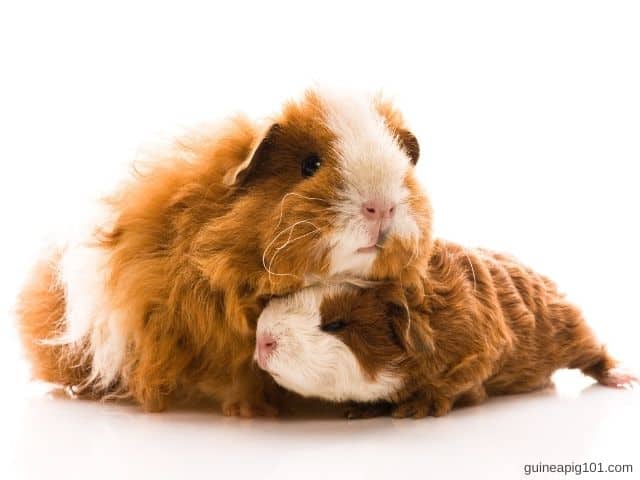
If you are looking to get one for yourself, I would definitely suggest you try the shelter homes nearby first. There are some rehoming pigs available in there. You can also contact a reputable breeder to get one.
- A large cage is a must for texel guinea pig
- Use good quality bedding and keep the cage clean so that your guinea pigs coat doesn’t accumulate debris.
- Providing a good quality diet is a must.
- Make sure you provide them with enough floor time to play and exercise
- Texel guinea pigs needs daily brushing to keep their coat clean and healthy.
- Texel guinea pigs also need their hair clipped every month. Excess growth around their anus and toes can cause issues.
- Make sure you bath them once a month so that their coat and skin remains clean and healthy. Always use guinea pig specified shampoo for bathing them.
- Regular vet visit(once in 3 months) helps in preventing diseases so that your guinea pigs can live a long and healthy life.
- While going to get one always ensure that they are healthy. A healthy coat, glowing eyes, good sound, and good dental health helps identify the right one.
